When Erin Chiparo and I started planning for the exhibition Flora + Fauna: A Bounty of Beasts and Botanicals, we decided to emphasize the relationship between the natural world and bookmaking. We intentionally selected to have the cases we titled “A Folio of Flora” and “A Folio of Fauna” front and center so visitors would encounter them immediately upon entering the building. These cases feature examples of plants and animals which contribute to the physical creation of books and manuscripts as well as examples of plants and animals as artistic inspiration for the contents of books and manuscripts.
To curate an exhibition is to be constantly confronted by decision fatigue. First, one must select the subject or theme for the exhibition, then themes for each case, then books and manuscripts for each thematic case, then openings for each book or manuscript. One book I selected for the case “A Folio of Flora” is Mary Ellen Solt’s Flowers in Concrete (1966). I selected this book of poetry in part because it was published in Bloomington and in part because of the creative typographic portrayal of plants within its pages. Finally, I selected the poem “Forsythia,” keeping in mind that the exhibition coincides with the beginning of spring. The vibrant color of the page adds an eye-catching element to the display. Forsythia always reminds me of the early days of spring when the first bursts of color are such a welcome relief from the monotony of grey Indiana wintertime.

Mary Ellen Solt was a leader of the concrete poetry movement, a style of poetry which marries form and content, with graphic patterns of letters, words, and symbols creating a result that is both verbal and visual. Solt was a professor of poetry and comparative literature as well as the Director of the Polish Studies Center at Indiana University. She taught at Indiana University from 1970-1991. Her papers are housed at the Lilly Library, with the largest portion of the collection processing completed in 2022. In an upcoming blog post, Lilly Library Assistant Archivist Kyra Triebold will write about her experience processing the large and varied materials which comprise the Solt mss. II.
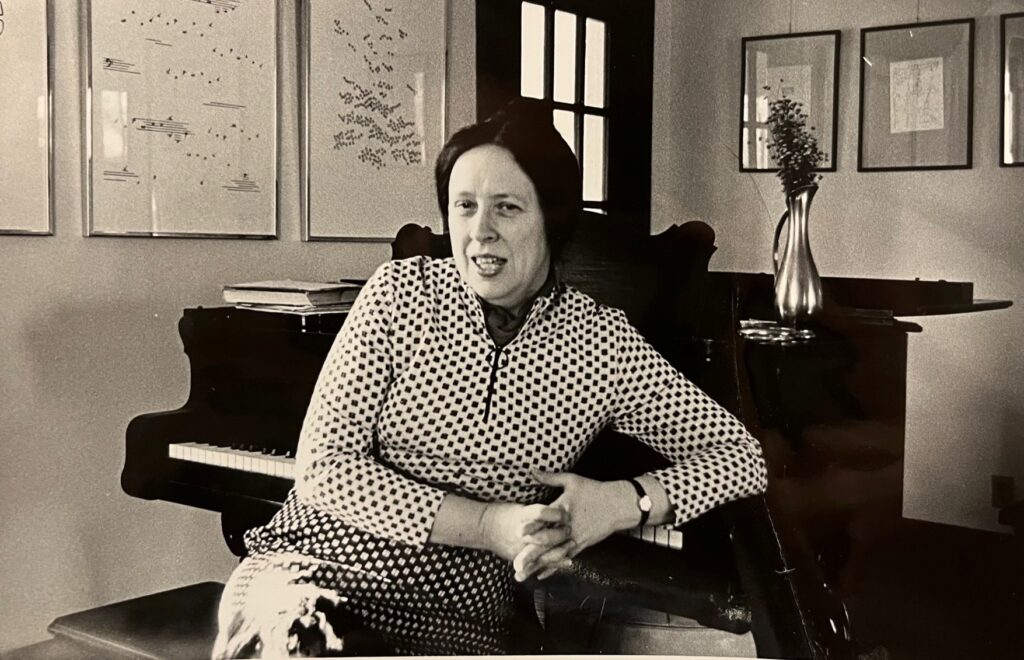
As I have always found to be the case with rare books and manuscripts, each individual item featured in the Flora + Fauna exhibition contains its own universe of connections and stories. The published collection of Flowers in Concrete is the single book I selected to represent Mary Ellen Solt, but the Lilly Library’s holdings related to Solt’s career are extensive, even when focused on the creation and publication history of a single poem.
For example, in exploring Box 4 of Solt mss. II, I encountered over a dozen drafts of the poem “Forsythia” in different shapes and including different words. I always love to see evidence of an artist’s or author’s creative process. This collection is a goldmine for this type of evidence.
Among my favorite findings are these wildly different drafts of the poem as it took shape:
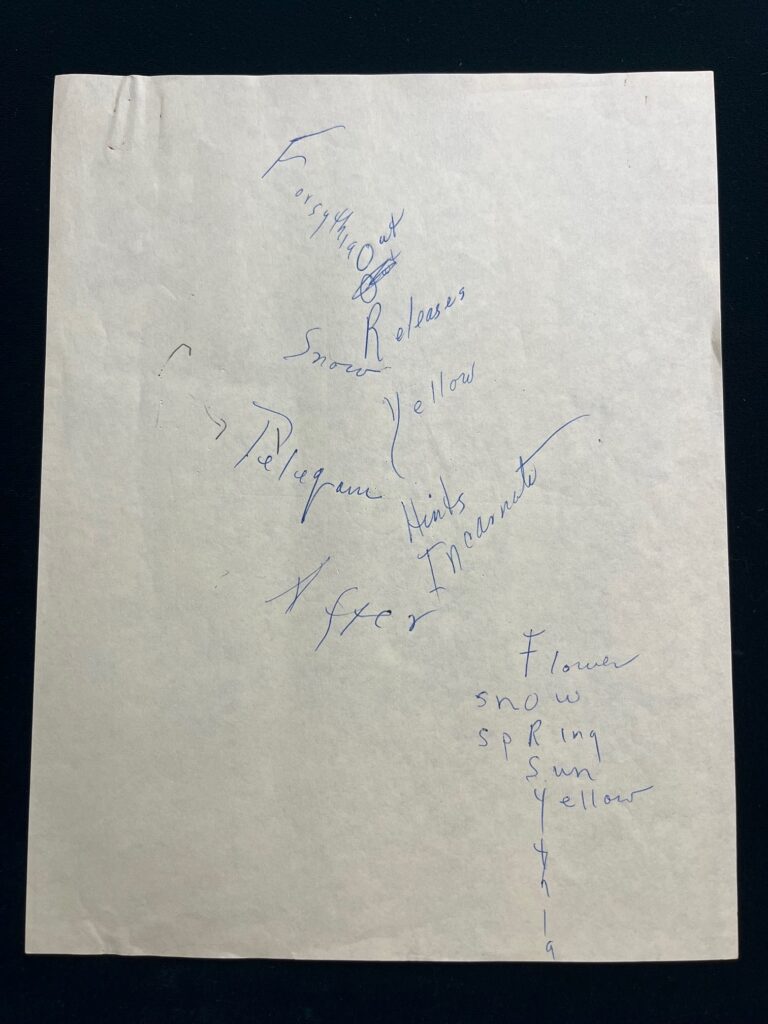

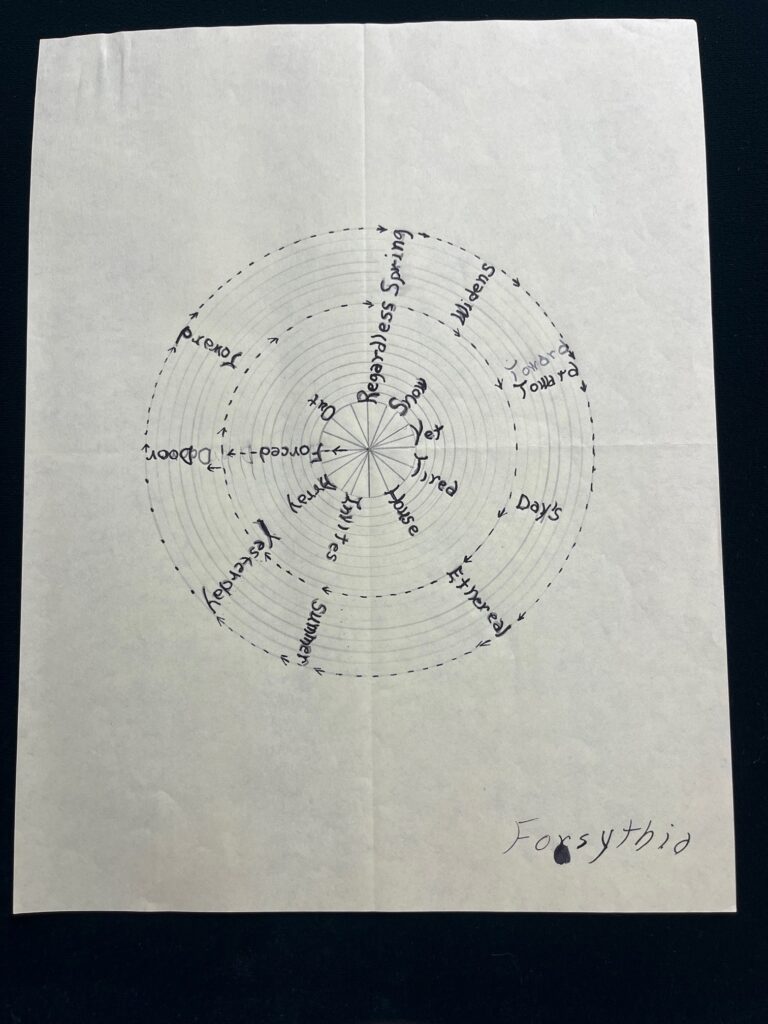
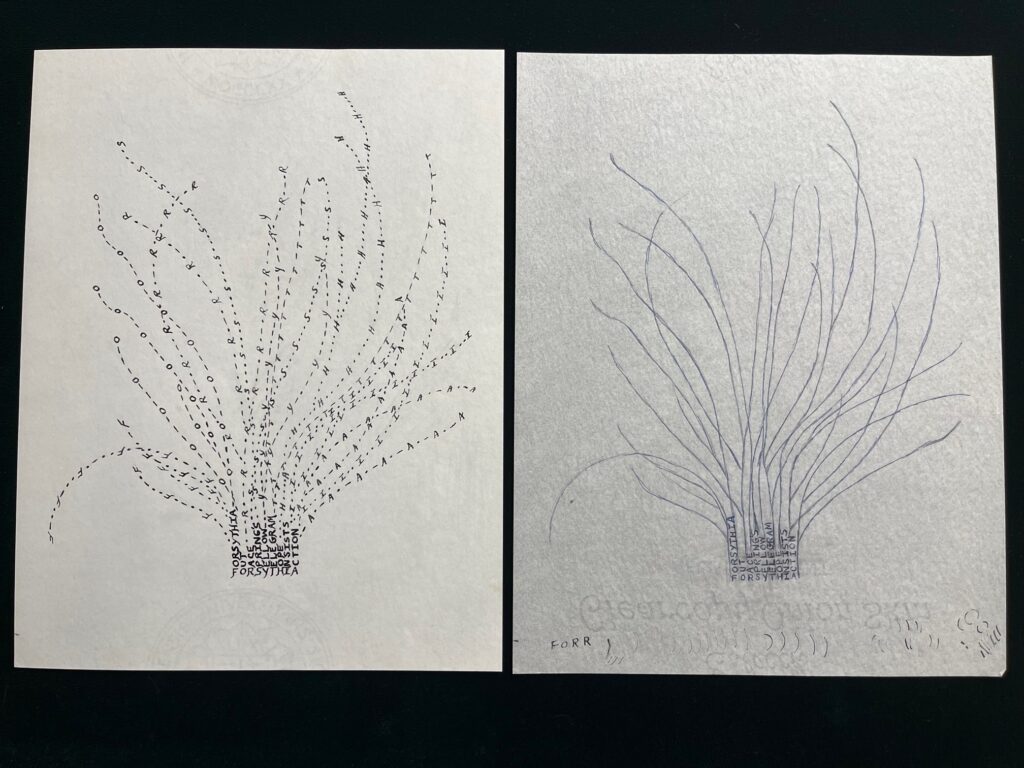

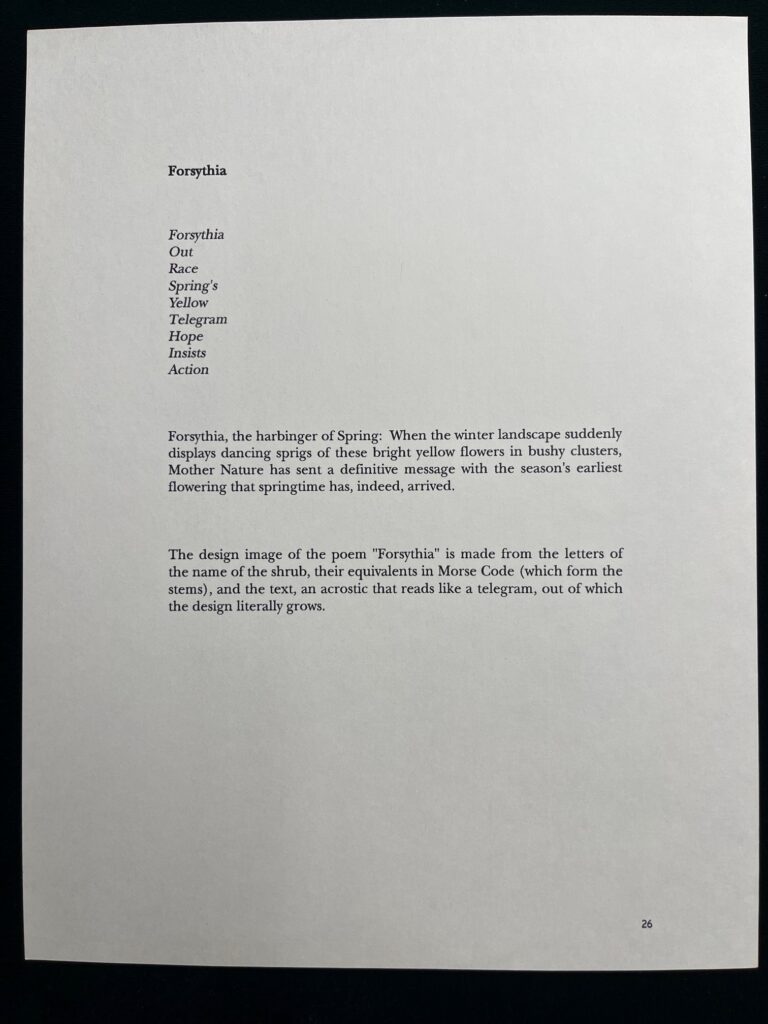
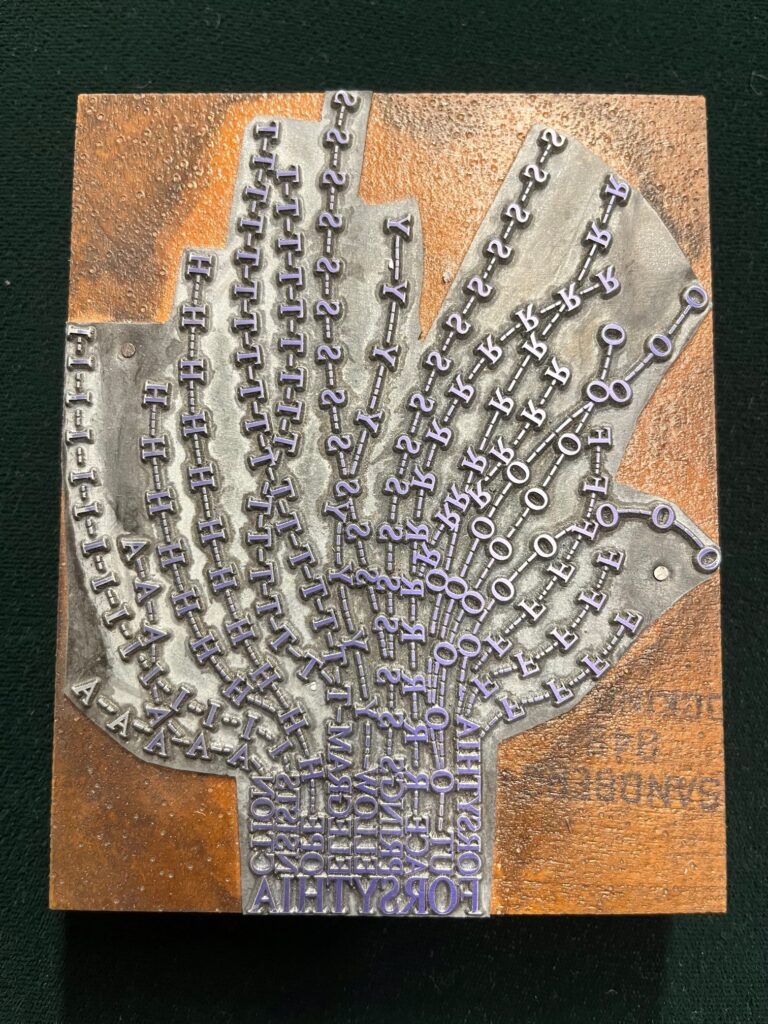
Box 5 of the collection contains many iterations of “Forsythia” in print, including in some unexpected places. My favorite piece is a booklet produced by Albert H. Halff Associates, Inc. Engineers of Dallas, Texas. This booklet on the engineering firm’s projects includes the poem “Forsythia” as well as several original concrete poems by Bro Halff. I love seeing this creative use of concrete poetry in conjunction with literal concrete.

Of course, the drafts of “Forsythia” offer only a tiny slice of the riches contained within the Solt mss. II. Mary Ellen Solt was in correspondence with many other writers and poets. Notably, she researched and befriended poet William Carlos Williams. Their correspondence is substantial enough to warrant its own subseries within the archival collection (Boxes 6 and 7). Other major poets with whom Solt corresponded include Ian Hamilton Finlay, Cid Corman, and Louis Zukofsky, all of whom were her close friends.
As happens so frequently among library collections, we have moved from one poem about the early-blooming plant forsythia to the personal and professional connections among 20th century poets. I hope this will inspire visitors to look closely at the exhibition Flora + Fauna and contemplate the interconnectivity of our natural and written worlds.
Happy spring!
Isabel Planton, Reference Librarian, The Lilly Library
Leave a Reply